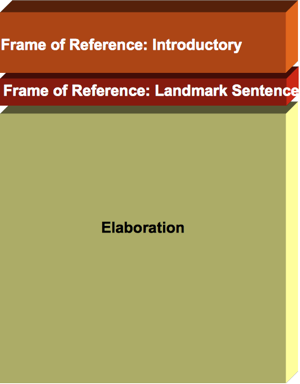The Science Of Scientific Writing Set D Introduction Multi-part Sentences The End of the Sentence Exercise 1 The Start of the Sentence The Middle of the Sentence Sentence, Paragraph compared Mapping Multi-part Sentences Exercise 2 Types of Sentence Part Exercise X Advanced Sentence Stories Final Page .
OVERVIEW: The way to well-written science
PART I: Paragraphs and Sentences
SET A: Paragraphs: The Maps Behind Them
SET B: Paragraphs: Using Maps to Meet Readers' Expectations
SET C: Paragraph Coherence and Cohesion
SET D: Sentences
SET E: Scientific Sections (including Methods)
SET F: Scientific Sections: The Discussion
SET G : Scientific Sections: The Introduction
SET H : The Paper as a Whole
The structure of a long, multi-part sentence is very similar to that of a paragraph
The two diagrams summarise the essential structures of a multi-part sentence and the two basic paragraph types (landmark-final paragraph and landmark-early).



The sentence structure is almost identical to that of a landmark-final paragraph, and has much in common with the landmark early.
What about one-part sentences?
Even when using simple, one-part sentences the guiding principle of Familiar First applies. Sentences in English text (and many other languages) follow a pattern called Topic-Comment (or Theme-Rheme) wherein the early content usually refers to something already mentioned (the Topic) and the latter part tells us something new (the Comment) about the topic. In a scientific text, the Comment content of an early sentence will often serve as the Topic of a later sentence, i.e. it acts in the same "stepping stone" fashion as we saw in chains of longer sentences. For example:
The hair samples were collected each day. Regular collection made it possible to correlate animal movements with weather conditions.
......